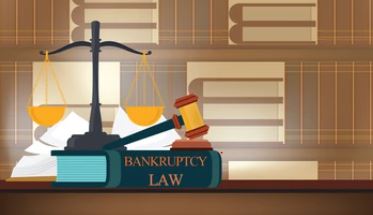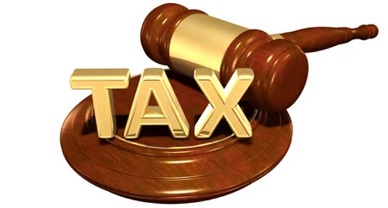IPR And Insolvency And Bankruptcy Code
Introduction
Be it a trademark, patent, copyright, intellectual property has become an important part of the company’s success. Corporates could be seen spending numerous resources so as to create a position in the market and to stand out from the crowd. Differentiated products help the client or the customer in distinguishing among the products. But when it comes to corporate insolvency resolution process, the intellectual property has been a matter of issue. The financial distress of the company can lead to the insolvency and could affect the management. As the companies are dependent on intellectual property rights there must be a person who is an expert in the matter of intellectual property rights.
The recent case of Revlon is related to bankruptcy but focusing on the other side, the case has brought the attention to the topic that could be of useful to intellectual property rights that is the relation of IPR and the bankruptcy. It could be seen in the various provisions of the Insolvency and Bankruptcy Code that the code requires IPR assets are protected and valued for the resolution of the company. In the current times, there are many laws that are dealing with the corporate financial failure issues, but the Insolvency and Bankruptcy Code could be considered as one of the best reform related to the insolvency. This article has tried to bring out certain provisions of IBC that are in relation to the Intellectual Property.
‘Revlon’ is an American multi national Company based in New York since 1932 and it deals in cosmetic products. As Revlon has also established its position in India so, considering the ‘trademark’, Revlon has a connection with India. In the case of Revlon Inc. v Sarita Manufacturing Company (1997)[1], Delhi High Court has recognised Revlon trademark as a ‘well known trademark’ as per Trademark Registry. As per Section 2(1)(zg) in The Trade Marks Act, 1999, the “well known trade mark”, in relation to any goods or services, means a mark which has become so to the substantial segment of the public which uses such goods or receives such services that the use of such mark in relation to other goods or services would be likely to be taken as indicating a connection in the course of trade or rendering of services between those goods or services and a person using the mark in relation to the first mentioned goods or services.
Modi claimed that Revlon is seeing “record consumer off take growth after COVID included disruptions”. However, due to heavy competition in the cosmetic market the company has filed for bankruptcy.
However, as mentioned above the article won’t be discussing the bankruptcy case of Revlon rather it would be focusing on the ‘treatment of trademarks in Indian insolvency process and the IPR and Insolvency and bankruptcy code.’
When an insolvency application is admitted, a ‘moratorium’ is declared with respect to the assets (which includes trademarks) of the corporate debtor. It must be remembered that during the corporate debtor is restricted from transferring any of its assets during the moratorium period. The creditors and the parties who are interested in preserving the trademark of a corporate debtor should inform the Trade Mark Registry about the moratorium so as to avoid the fraudulent transfers. This will help TMR to block assignment during this period.
The Principal Bench of NCLT in the case of Edelweiss Asset Reconstruction Company Limited v. Net 4 India (2021)[2] held an “opportunistic and value destroying transaction involving a fraudulent assignment of the corporate debtor’s trademark as null and void.”
Almost every company could be seen using intellectual property for their success. Along with tangible assets, intangible assets has also become an important part for the company.
The rules and regulations under Insolvency and Bankruptcy Code determines how the assets and the creditor claims will be handled during the bankruptcy process and these rules also applies to the intellectual property licenses. The code features the provisions that could help the debtor licensees to keep valuable property licenses and the laws that can help debtor licensees get relief from the debt. The creditor who is claiming a security interest in IP should file all the documents in relation to the Intellectual Property. That means the creditor who is claiming security interest must ‘perfect’ the security interest.
[Image Source : Shutterstock]
The insolvency law has some objectives that is restoring the ‘debtor’s company’ to profitable company, maximizing the return of the creditors, identifying the reason of company’s failure and imposing sanctions on their illegal or culpable management. This law provides for the procedure for resolution of insolvency and the certain rules for the controlling various stakeholders of the company. It also includes provisions for licensees and holders of the intellectual property. The main purpose of insolvency law could be considered as ‘resolving’ than ‘liquidating of the company.’
It is an act to “consolidate and amend the laws relating to reorganization and insolvency resolution of corporate persons, partnership firms and individuals in a time bound manner for maximization of value of assets of such persons, to promote entrepreneurship, availability of credit and balance the interests of all the stakeholders including alteration in the order of priority of payment of Government dues and to establish an Insolvency and Bankruptcy Board of India, and for matters connected therewith or incidental thereto.”
As new issues are evolving and even the IPR matters are getting connected to the insolvency matters so there is a need to understand the relation between the IPR and the insolvency code.
Relation between the IPR and the Insolvency Code
1.Section 18, Insolvency and Bankruptcy Code[3]
The ‘interim resolution professional’ and the management of corporate debtors has to collect information regarding finance, ‘assets’, and the operation as per the section 18 of the Insolvency and Bankruptcy Code. Section 18 of the Code also mentions about what all can be included in the assets. So, the corporate debtor may or may not possess the assets and it can be tangible, ‘intangible’ or the securities. And the intangible assets include copyright, trademark, patent, design.
- Section 29 of the Insolvency and Bankruptcy Code[4]
As per the Section 29 of the Insolvency and Bankruptcy Code, the ‘Resolution Professional’ has to provide all information to the ‘resolution applicant’. The resolution applicant is supposed to not disclose the relevant information and has to work according to the law and has a responsibility to protect the Intellectual Property of the corporate debtor. Until the corporate insolvency resolution process continues, the protection of Intellectual property has to be extended.
- Review by the resolution professional
The insolvency resolution professional is supposed to understand and make a list of the intellectual property used by the corporate debtor. It is also the responsibility of the resolution professional to manage the company’s entire Intellectual Property and has to segregate the registered and unregistered intellectual property.
There are some intellectual Property which can be licensed. The holder of IP license gets the royalty payment when the product, service or idea is profitable. During the bankruptcy process license rights are evaluated and the bankruptcy filer with a ‘non exclusive license’ will be having different options than a bankruptcy filer with ‘exclusive rights.’ considering the IP holder, filing bankruptcy is a ‘relief solution.’ Bankruptcy involves different types of proceedings and each proceeding is identified by chapters of bankruptcy code. The most common types of bankruptcy proceedings involve Chapter 7, 11 and 13. As soon as the bankruptcy petition is filed, the automatic stay is placed. The automatic stay means “an immediate stop to all collection activity on debt that were due before filing bankruptcy petition.”
Conclusion
Sometimes the failure of the business plans could be considered as the integral to the process of the market economy. In such a case, it is better to have speedy mechanism that would help the financiers and to negotiate and work out a new arrangement. The IBC code has helped in improving the global rank of India in the ease of doing business. Intellectual property rights are recognised across the world. The role that intellectual property plays in today’s economy is undeniable and so it is important to cover all the aspects related to IP. The corporations sometimes face liquidation under the ‘insolvency legislation.’ A company cannot afford to ignore such IP assets during liquidation. Despite there is an IBC for resolving insolvency related matter but under Insolvency and Bankruptcy Code, 2016, much could not be found about IPR. Intellectual Property Rights seems to be an ignored asset under the code. In any insolvency legislation, having the framework for the protection of the intellectual property assets is of much importance.
Author: Bhargavi Nimje, a student of Shri Navalmal Firodia Law College, Pune, in case of any queries please contact/write back to us at support@ipandlegalfilings.com or IP & Legal Filing.
References:
Insolvency and bankruptcy code, 2016
ipleaders
Case laws
Revlon Inc. v Sarita Manufacturing Company (1997), I.A. No.5895 of 1986 in Suit No.2222 of 1986
Edelweiss Asset Reconstruction Company Limited v. Net 4 India (2021), CA 1140/2019 AND 1756/2019
[1] Revlon Inc. v Sarita Manufacturing Company (1997), I.A. No.5895 of 1986 in Suit No.2222 of 1986
[2] Edelweiss Asset Reconstruction Company Limited v. Net 4 India (2021), CA 1140/2019 AND 1756/2019
[3] Section 18, Insolvency and Bankruptcy Code, 2016
[4] Section 29, Insolvency and Bankruptcy Code, 2016



